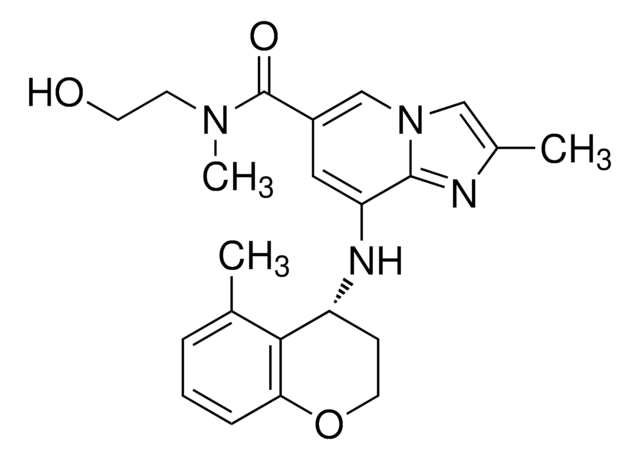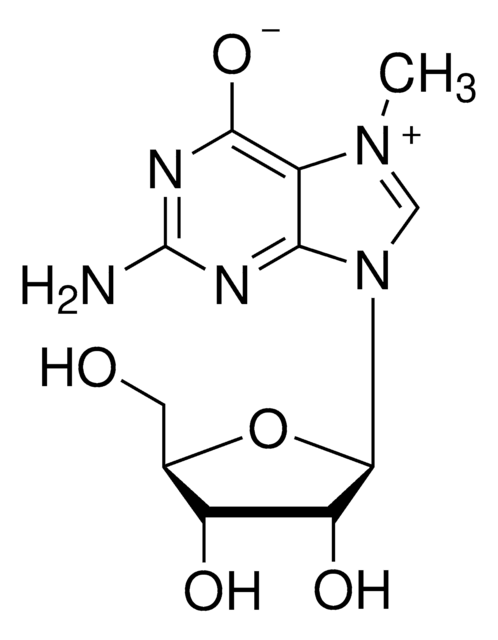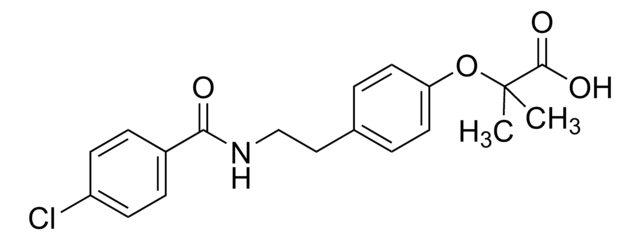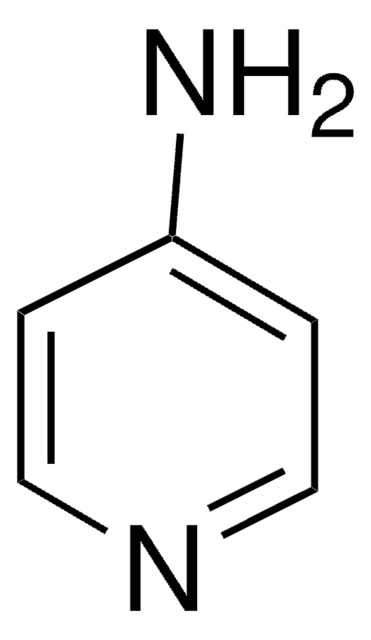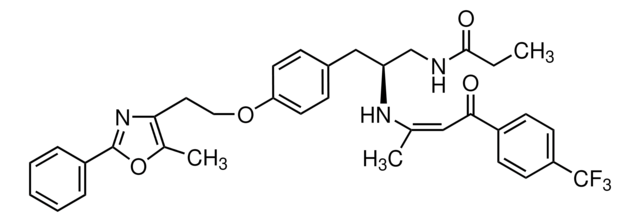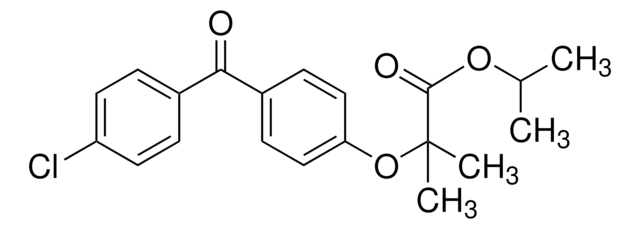PZ0149
CP-868388
≥98% (HPLC)
Synonym(s):
(S)-2-(3-(1-((4-Isopropylbenzyloxy)carbonyl)piperidin-3-yl)phenoxy)-2-methylpropanoic acid
About This Item
Recommended Products
Quality Level
Assay
≥98% (HPLC)
form
powder
optical activity
[α]/D -50 to -65°, c = 0.2 in methanol
color
white to off-white
solubility
DMSO: ≥30 mg/mL
storage temp.
2-8°C
SMILES string
CC(C)c1ccc(COC(=O)N2CCC[C@H](C2)c3cccc(OC(C)(C)C(O)=O)c3)cc1
InChI
1S/C26H33NO5/c1-18(2)20-12-10-19(11-13-20)17-31-25(30)27-14-6-8-22(16-27)21-7-5-9-23(15-21)32-26(3,4)24(28)29/h5,7,9-13,15,18,22H,6,8,14,16-17H2,1-4H3,(H,28,29)/t22-/m1/s1
InChI key
CSLFIHDRJSTULR-JOCHJYFZSA-N
Biochem/physiol Actions
Features and Benefits
Signal Word
Danger
Hazard Statements
Precautionary Statements
Hazard Classifications
Acute Tox. 3 Oral - Aquatic Acute 1 - Aquatic Chronic 1
Storage Class Code
6.1C - Combustible acute toxic Cat.3 / toxic compounds or compounds which causing chronic effects
WGK
WGK 3
Flash Point(F)
Not applicable
Flash Point(C)
Not applicable
Certificates of Analysis (COA)
Search for Certificates of Analysis (COA) by entering the products Lot/Batch Number. Lot and Batch Numbers can be found on a product’s label following the words ‘Lot’ or ‘Batch’.
Already Own This Product?
Find documentation for the products that you have recently purchased in the Document Library.
Articles
Peroxisome proliferator activated receptors (PPARs) are members of the nuclear hormone receptor superfamily of ligand-activated transcription factors that are related to retinoid, steroid and thyroid hormone receptors.
We offer many products related to non-steroid nuclear receptors for your research needs.
Our team of scientists has experience in all areas of research including Life Science, Material Science, Chemical Synthesis, Chromatography, Analytical and many others.
Contact Technical Service